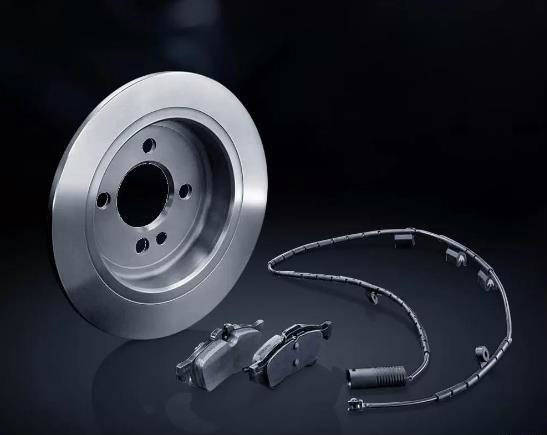Do brake discs have grooves that must be replaced?
2020-06-27 source: Laizhou Yiante Auto Parts Co., Ltd
I believe that careful friends will find that many grooves will appear in the brake discs of cars we have used for a long time. What's the reason? Do you need to replace the grooves of the brake disc? Let's take a look at the following small braids.
Why do the brake pads have grooves on the discs? Start from the structure of the brake pads and the composition of the raw materials:
The main body of the brake pad is generally divided into two parts: the friction layer and the steel back (or the back plate). What we see from the outside of the tire is the steel back. The steel back does not play a friction role. The main role is to facilitate the installation in the brake caliper and improve the strength of the brake pad. The differences between the steel back manufacturers are not too large and the technical content is not high.
The main difference between the good and bad quality of the brake pads is that the friction layer is a composite material, which is evenly mixed by organic fiber, inorganic fiber, mineral filler, phenolic resin, etc. under the high temperature and high pressure environment in the press, it is hot pressed.
Nowadays, many brake pads will divide the friction layer into two layers, the bottom layer and the surface layer. The bottom layer is between the steel back and the surface layer. During the use of the brake pad, the surface layer will be worn off first, then the bottom layer, and then the steel back. Generally, the brake pad should be replaced before the end of the surface layer wear.
The problem of the brake pad causes the scratch of the brake disc. The above-mentioned brake one-sided layer material contains mineral fiber, which is formed by the melting of various mineral content rocks under high temperature and the formation of fiber after the spraying. But when the fiber is produced in the process of ore spinneret, some of them can't be spinneret like, some of them form small balls (we call them "slag balls"). The hardness of these slag balls will be much higher than that of fibrous rocks. There are many problems with the brake pads.
After the production of general mineral fiber, the slag ball content will be as high as 40% ~ 50%, so the enterprise will screen. The purity of mineral fiber will be increased to 95% ~ 98.5%. But it still contains 1.5% ~ 5% slag balls (the current process can not remove all slag balls). Generally, the mineral fiber used in the disc fabric layer is of this type. But it will inevitably contain a small amount of slag balls. Slag balls, like sand mixed in rice, can damage the brake discs. If there are too many slag balls in the lining layer of the brake pad, the brake disc will be cut out of the groove. In serious cases, the brake pad and the brake disc need to be replaced together.
In fact, the hard material in the brake pad is a kind of slag ball in the mineral fiber. Under the high temperature produced by the glass fiber during braking, the glass ball will also form. The hardness is also very high. There are slag balls in the ceramic fiber. Many natural mineral fillers may also contain impurities. Therefore, when choosing materials, brake pad manufacturers will choose raw materials with little or no such hard materials. For example, glass fiber is no longer used in disk. But like mineral fiber, as one of the main materials of brake pads, there is no better material to replace.
Analysis of the causes of the brake pad groove:
1. Only the front or rear brake discs have grooves
This situation is generally caused by driving habits and uneven distribution of front and rear brake force.
2. Only one brake disc has a groove, others are normal, this situation is generally caused by material or external force, and the possible factors are as follows:
a. There is something between the brake disc and the brake pad, which happens to be caused by the big foot brake;
b. The force of the brake cylinder is unbalanced;
c. The manufacturing process of the brake pad is defective, resulting in the uneven manufacturing of the mixed materials, resulting in the brake pad is too hard or there are large metal particles in the brake pad;
Recommended treatment method: remove the brake pads with grooves, place the low-density sandpaper in a flat position, polish the brake pads horizontally and vertically on the sandpaper, and polish the brake pads to a flat position.
Consequences
The consequence of not handling in time is that the groove of the brake disc will become deeper and deeper, so that when it is serious, there will be brake weakness and uneven friction. The brake is shaking, and there is a sound of friction on the brake, which causes the braking force to decrease.
Some friends just didn't deal with it in time, which made the groove deeper and deeper. When it came time to deal with it, they had to polish the brake disc. If it is not recommended to polish the brake disc when necessary, the result of polishing several times is that the brake force imbalance is directly and permanently formed. These things may not be realized in normal times, but when you save life at a very high speed, they are very life-threatening.
Therefore, the brake pads should be used as well as possible. For example, when the new car is replaced with ceramic brake pads, they are safe and easy to use, as well as for the brake discs.




